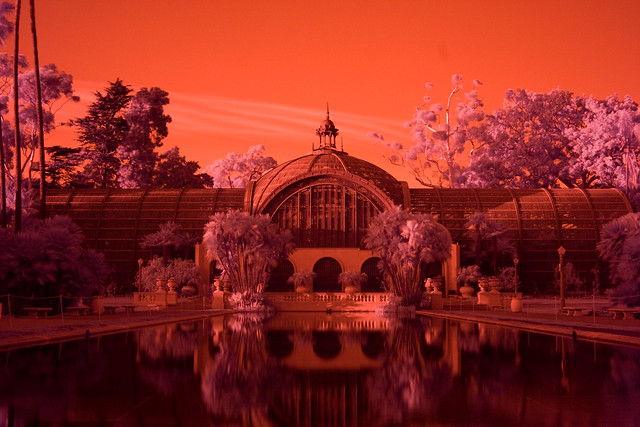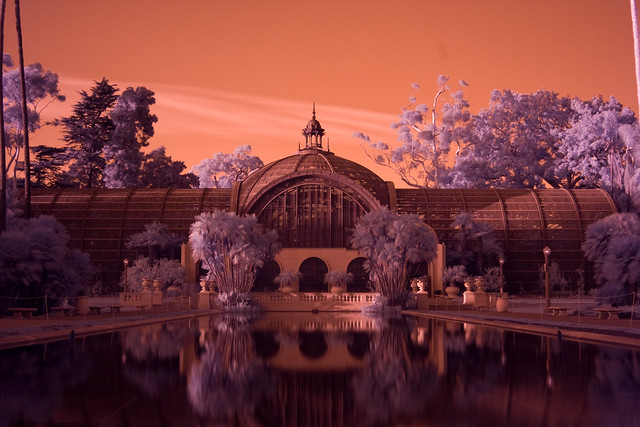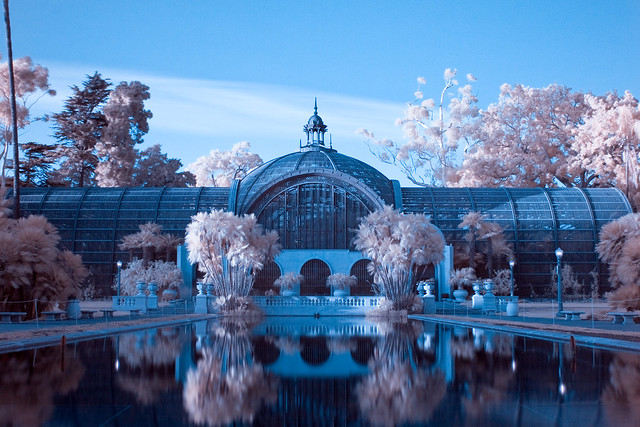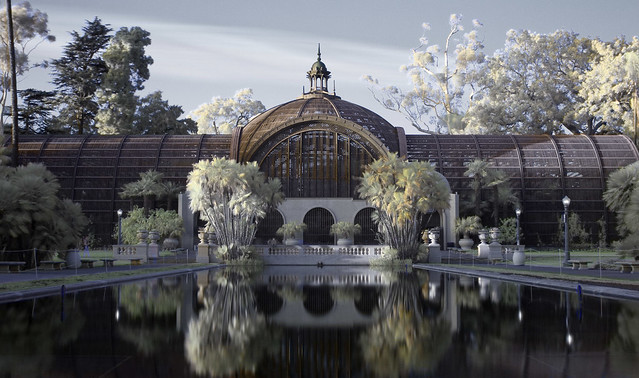Hi, As per the title really.
Can you print an INFRARED image on an inkjet printer?
If yes what settings would I use?
Thanks
Russ
Results 1 to 18 of 18
-
12th July 2016, 03:10 PM #1

- Join Date
- Oct 2010
- Location
- Cumbria
- Posts
- 776
- Real Name
- Russell
Can You Print an INFRARED Image? What Settings?
Last edited by russellsnr; 12th July 2016 at 03:18 PM. Reason: spelling
-
12th July 2016, 03:12 PM #2
re: Can You Print an INFRARED Image? What Settings?
What is an inferred image?
-
12th July 2016, 03:17 PM #3

- Join Date
- Oct 2010
- Location
- Cumbria
- Posts
- 776
- Real Name
- Russell
-
12th July 2016, 03:24 PM #4

- Join Date
- May 2014
- Location
- amsterdam, netherlands
- Posts
- 3,182
- Real Name
- George
-
12th July 2016, 04:53 PM #5
re: Can You Print an INFRARED Image? What Settings?
+1 to what George has written. The IR capture is what the camera has recorded, after that, the post processing and printing would be the same as any other image, unless you have done something quite strange.
-
12th July 2016, 04:56 PM #6

- Join Date
- Oct 2010
- Location
- Cumbria
- Posts
- 776
- Real Name
- Russell
re: Can You Print an INFRARED Image? What Settings?
Hi, Thank you for the replies just waiting for an IR filter so getting prepaired.
Russ
-
12th July 2016, 05:50 PM #7

- Join Date
- Feb 2012
- Location
- Texas
- Posts
- 6,956
- Real Name
- Ted
-
12th July 2016, 06:31 PM #8
re: Can You Print an INFRARED Image? What Settings?
Russell, I only process and print my IR images in B&W rather that the creative false color of some IR shots...

However, once the image is shot, it should not matter in printing if the original capture was in IR or in standard capture.
One thing that I will mention is that in using an IR filter vs. a camera dedicated to IR; the exposure times are quite long and focusing is difficult.
That pretty well means that a tripod or some other way to firmly stabilize your camera during shooting is essential.
-
12th July 2016, 07:05 PM #9

- Join Date
- Oct 2010
- Location
- Cumbria
- Posts
- 776
- Real Name
- Russell
re: Can You Print an INFRARED Image? What Settings?
Hi, As I have never tried IR before I can't really answer that question right now. Looking at lots of Youtube though

I am only at the try it stage with a filter first (when it arrives) then if all goes well maybe a camera as I want to try panoramic IR photography.
Thanks
Russ
-
12th July 2016, 07:07 PM #10

- Join Date
- Oct 2010
- Location
- Cumbria
- Posts
- 776
- Real Name
- Russell
-
12th July 2016, 07:29 PM #11
Re: Can You Print an INFRARED Image? What Settings?
It seemed to be inferred that a moderator should amend the thread title, so I did

Good luck with the IR Russ,
Cheers, Dave
-
13th July 2016, 07:47 PM #12

- Join Date
- Feb 2012
- Location
- Texas
- Posts
- 6,956
- Real Name
- Ted
Re: Can You Print an INFRARED Image? What Settings?
When you're considering a camera, please do consider a Sigma DSLR (not SD9 though): absolutely no modification is needed to shoot IR, just pop out the 'dust cover' (just inside the lens mount) and you're good to go for full spectrum/IR shooting.
I think there's a Sony model that has an IR internal 'hot mirror' that can be activated/not activated but I have no idea how it works; someone here might know.
-
13th July 2016, 10:43 PM #13
Re: Can You Print an INFRARED Image? What Settings?
Start small, start slow. Do straight-up IR and straight-up panos, before trying to combine the two. I say this as someone who does exposure-fused panos.

You'll also want to know what you're getting into. The filter alone isn't gonna get most of those images you see as infrared out there. False color is much more common. Also, you have to use a tripod. An R72 is like a 12-stop ND filter in terms of how much it darkens the scene. Expect to use liveview and exposure simulation--you're not gonna see much through the viewfinder. This is what comes out of the camera by just slapping an IR-pass filter (Hoya R72) on the front of your camera. It's probably not what you're envisioning. It's a 30s exposure at f/8, iso 400.

It takes custom white balance

and a channel swap to get this:

And combining with a visible light image to get this:

A lot of postprocessing goes into "Infrared" images. Remember, this is interpreting infrared sensitivity into visible light terms. If the images were really infrared, we couldn't see them.
Last edited by inkista; 13th July 2016 at 10:49 PM.
-
14th July 2016, 06:18 AM #14

- Join Date
- Oct 2010
- Location
- Cumbria
- Posts
- 776
- Real Name
- Russell
Re: Can You Print an INFRARED Image? What Settings?
Hi, Many thanks for ALL the info and advice.
Ted, I have all Canon gear so Nikon is not really an option but I do have a 600D so thinking getting it converted as it is only a second to the 6D.
Kathy Li, firstly the image really is lovley.
I understand about the exposure range and what a filter can do to reduce shutter speed. With my big stopper as with all of my photography I use a hand held meter so I am assuming that the ir filter will work for exposure the same way? ie. take an exposure reading then adjust for the change. The one thing we do have where I live is really bright sun lite days but minus the white clouds in the Summer.
One thing that does bother me on the filter side of things and going back to the Big stopper, that has a seal round the edge to stop light leak during long exposures, I have been looking at the Cokin Z007 Infrared 720 (89B) Filter that fits the LEE system so would not be tied to the one lens but as you point out the exposure times can run into many seconds and the Cokin as far as I can see does not have seal between lens and back of the filter so is light leak going to be a problem with this filter?
Again thank you for all the help.
Russ
-
14th July 2016, 07:17 AM #15

- Join Date
- Feb 2012
- Location
- Texas
- Posts
- 6,956
- Real Name
- Ted
-
14th July 2016, 08:26 AM #16

- Join Date
- Oct 2010
- Location
- Cumbria
- Posts
- 776
- Real Name
- Russell
-
14th July 2016, 09:25 AM #17
Re: Can You Print an INFRARED Image? What Settings?
I'm in San Diego, it's the same, here. That image was done in full sunlight; sunny 16 conditions.
I've only used the screw-on filters. My guess would be yes, visible light leakage around the edges is liable to be an issue, since an unconverted camera will be much more sensitive to visible light than infrared. You're probably going to have to find some way to block the leak. I googled up this webpage, it might be useful.... I have been looking at the Cokin Z007 Infrared 720 (89B) Filter that fits the LEE system so would not be tied to the one lens but as you point out the exposure times can run into many seconds and the Cokin as far as I can see does not have seal between lens and back of the filter so is light leak going to be a problem with this filter?...
-
15th July 2016, 11:03 AM #18

- Join Date
- Feb 2012
- Location
- Texas
- Posts
- 6,956
- Real Name
- Ted
Re: Can You Print an INFRARED Image? What Settings?
I just noticed this in a thread over on DPR:
"the Fuji full spectrum camera someone recommended earlier"
See: http://www.dpreview.com/forums/post/58056894 for the mention and have a look back through the thread to find the Fuji reference.

 Helpful Posts:
Helpful Posts: 
 Reply With Quote
Reply With Quote
